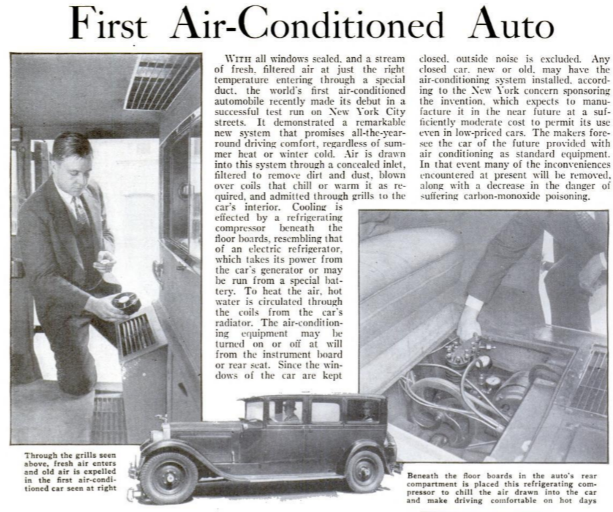
When you get into your car that has been baking in the summer heat of a supermarket parking lot for the past two hours, the first thing you do is crank up the air conditioning and try not to burn yourself on the seatbelt as you buckle up. You probably don't stop to consider what you would have done if your car was not air conditioned, or how it came to be that way. The history of A/C in automobiles, though, is quite an interesting one.
The first automobile manufacturing company to have air conditioning was Packard in 1939. However, for a number of reasons, it did not do well on the market, especially considering it was an expensive, flawed option in cars that most post-Great Depression American consumers did not want to invest in. It was therefore discontinued in 1941. Cadillac experimented with air conditioning in 1941, which was also rather unsuccessful.
Then, the Chrysler Airtemp was introduced in 1953. This system was more successful than Packard's or Cadillac's previous models because it was most effective and activated with a switch on the dashboard with three levels of power, closer to today's A/C systems in cars.
A year later, the Nash integrated system became the first heating, air conditioning, and ventilating system. Where most systems used a separate heating system, the Nash integrated system was unique in its dual nature and found success because of it.
Car coolers with evaporative cooling were popular up until the 1960s. They were the most successful in drier parts of the United States because they relied on low humidity, but until interior air conditioning systems were improved upon, car coolers were a sufficient way to cool a vehicle.
From there, air conditioning in cars continued to evolve into what we have today. Modern air conditioning units in cars run on power consumption, using horsepower from the engine to cool the vehicle. Although most days, we do not think much of our car air conditioning unless it is not functioning properly, modern car air conditioning was derived from various types of air conditioning systems over the years before it came to where it is today.
